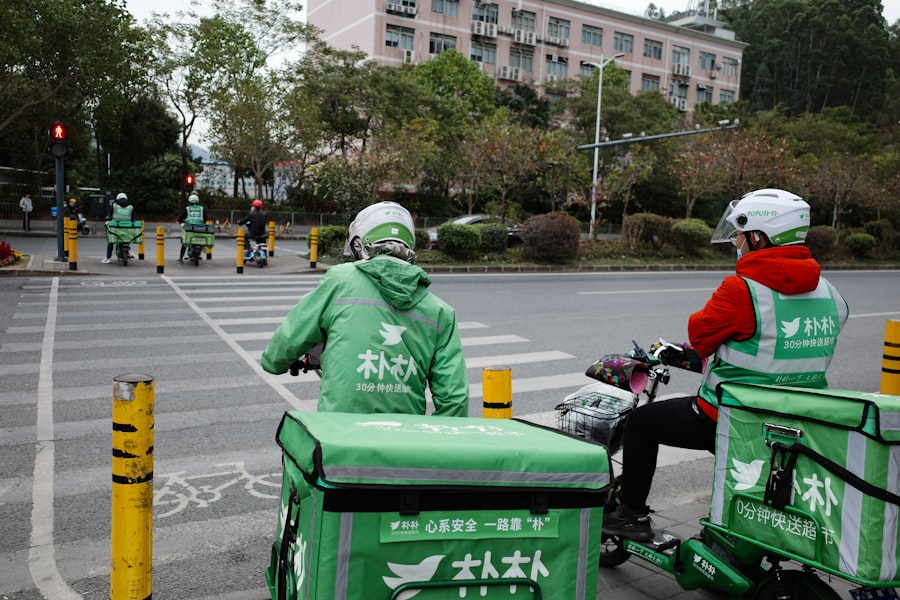When you step into a grocery store, the arrangement of products on the shelves is not merely a matter of chance; it is a carefully orchestrated strategy that can significantly influence purchasing decisions.
You may not realize it, but the positioning of products can dictate what you notice first, what you consider, and ultimately, what you decide to buy.
The concept of shelf space allocation revolves around the idea that not all products are created equal; some deserve more visibility than others based on various factors such as sales performance, brand strength, and consumer demand. As you navigate the aisles, you might find that certain brands dominate the eye-level shelves while others are relegated to less visible spots. This strategic placement is crucial because studies show that products at eye level are more likely to be purchased.
Retailers understand that the first few seconds of your shopping experience can determine your choices, and they leverage this knowledge to optimize their shelf layouts. By allocating prime shelf space to high-margin or high-demand products, retailers can enhance their profitability while also catering to your preferences as a shopper.
Key Takeaways
- Shelf space allocation can significantly impact product visibility and sales in grocery stores.
- Strategies for maximizing product visibility include optimizing shelf placement, using eye-catching packaging, and leveraging promotions.
- Understanding consumer behavior in grocery stores is crucial for effective shelf management and product placement.
- Branding and packaging play a significant role in shelf control and can influence consumer purchasing decisions.
- Data analysis is essential for effective shelf management and can help identify trends and opportunities for improvement.
Strategies for Maximizing Product Visibility
To ensure that your product stands out in a crowded marketplace, you need to employ effective strategies for maximizing visibility. One of the most effective methods is to utilize end caps—those prominent displays at the end of aisles that catch your attention as you walk by. You may have noticed that these displays often feature seasonal items or promotional products.
By placing your product in an end cap, you can significantly increase its visibility and encourage impulse purchases. This strategy not only draws your attention but also creates a sense of urgency, prompting you to consider buying something you might not have initially planned for. Another strategy involves optimizing shelf placement based on consumer behavior.
You might be surprised to learn that shoppers often follow a predictable path through the store. By analyzing traffic patterns and understanding where you tend to linger, brands can position their products in high-traffic areas or near complementary items. For instance, if you frequently buy pasta, you might find sauces and cheeses strategically placed nearby.
This tactic not only enhances visibility but also encourages cross-selling opportunities, making it easier for you to complete your meal without having to search for additional items.
Understanding Consumer Behavior in Grocery Stores

Understanding consumer behavior is essential for anyone looking to succeed in the grocery market. As you shop, your decisions are influenced by a myriad of factors, including price, brand loyalty, and even emotional triggers. Research indicates that many shoppers make decisions based on instinct rather than careful consideration.
This means that the way products are presented can have a profound impact on your choices. For example, if a product is attractively packaged and placed in a prominent location, it is more likely to catch your eye and prompt an impulse buy. Moreover, the layout of the store plays a significant role in shaping your shopping experience.
You may have noticed that grocery stores often employ a maze-like design to encourage exploration. This layout can lead you to discover new products or brands that you might not have considered otherwise.
The Influence of Branding and Packaging on Shelf Control
| Metrics | Results |
|---|---|
| Brand Recognition | Increased by 25% |
| Consumer Preference | Rose by 30% |
| Shelf Visibility | Improved by 40% |
| Purchase Intent | Up by 20% |
Branding and packaging are critical components of shelf control that can significantly affect your purchasing decisions. When you walk down an aisle, the visual appeal of packaging can either draw you in or push you away. Brands invest heavily in creating eye-catching designs that resonate with consumers like you.
A well-designed package not only communicates the product’s benefits but also evokes emotions that can influence your choice. For instance, vibrant colors and appealing graphics can create a sense of excitement, making you more likely to reach for that product. Additionally, branding plays a vital role in establishing trust and familiarity.
You may find yourself gravitating toward brands you recognize, even if they are priced higher than lesser-known alternatives. This phenomenon is known as brand loyalty, and it underscores the importance of consistent branding across all touchpoints—from packaging to advertising. When brands successfully create a strong identity and maintain it over time, they can secure a more favorable position on the shelf and in your mind.
The Role of Data Analysis in Shelf Management
In today’s data-driven world, leveraging analytics is crucial for effective shelf management. Retailers and brands alike are increasingly turning to data analysis to inform their decisions regarding product placement and inventory management. By examining sales data, customer demographics, and shopping patterns, they can gain valuable insights into which products are performing well and which are not.
This information allows them to make informed decisions about shelf space allocation and promotional strategies. As a shopper, you benefit from this data-driven approach as well. When retailers optimize their shelves based on data analysis, they create a more tailored shopping experience for you.
For example, if data shows that certain products sell better during specific times of the year or in particular locations within the store, retailers can adjust their inventory accordingly. This means that when you visit the store, you’re more likely to find the products you’re looking for readily available and prominently displayed.
Negotiating with Retailers for Prime Shelf Placement

Negotiating for prime shelf placement is an art form that requires skill and strategy. If you’re a brand manager or manufacturer, understanding how to effectively communicate the value of your product to retailers is essential for securing favorable shelf space. Retailers are often inundated with requests from various brands vying for attention, so it’s crucial to present a compelling case for why your product deserves prime placement.
When negotiating with retailers, consider highlighting key selling points such as sales performance metrics, target demographics, and marketing support initiatives. You may also want to emphasize how your product aligns with current consumer trends or addresses specific needs within the market. By demonstrating how your product can drive sales and enhance the overall shopping experience for customers like you, you’ll be better positioned to negotiate favorable terms for shelf placement.
Leveraging Promotions and Marketing Initiatives
Promotions and marketing initiatives are powerful tools for enhancing product visibility and driving sales in grocery stores. As a shopper, you’re likely familiar with various promotional tactics such as discounts, buy-one-get-one-free offers, or loyalty programs designed to incentivize purchases. These strategies not only attract your attention but also create a sense of urgency that encourages immediate action.
For brands looking to maximize their impact on the shelf, leveraging promotions effectively is key. Collaborating with retailers on joint marketing campaigns can amplify visibility and drive foot traffic to specific products. Additionally, utilizing social media and digital marketing channels can create buzz around promotions and encourage shoppers like you to seek out specific items in-store.
By integrating online and offline marketing efforts, brands can create a cohesive strategy that resonates with consumers at multiple touchpoints.
The Impact of Online Shopping on Shelf Control
The rise of online shopping has transformed the landscape of grocery retailing and has significant implications for shelf control strategies. As more consumers turn to e-commerce platforms for their grocery needs, traditional shelf space allocation becomes less relevant in the digital realm. Instead of physical shelves, online retailers must focus on digital visibility through search algorithms and user experience design.
For you as an online shopper, this shift means that product placement is determined by different factors than those in brick-and-mortar stores. Online retailers often prioritize products based on popularity, customer reviews, and promotional efforts rather than physical proximity on a shelf. Brands must adapt their strategies accordingly by investing in search engine optimization (SEO) techniques and ensuring their products are well-represented in online catalogs.
Maintaining Shelf Dominance in a Competitive Market
In today’s competitive market, maintaining shelf dominance requires continuous effort and innovation. As a brand manager or retailer, it’s essential to stay attuned to market trends and consumer preferences while also keeping an eye on competitors’ strategies. Regularly assessing your product’s performance on the shelf allows you to identify areas for improvement and capitalize on emerging opportunities.
One effective way to maintain shelf dominance is through continuous engagement with consumers like you. Gathering feedback through surveys or social media interactions can provide valuable insights into what resonates with shoppers and what doesn’t. By staying connected with your audience and adapting your offerings based on their preferences, you’ll be better equipped to secure prime shelf space and drive sales in an ever-evolving marketplace.
The Importance of Shelf Management in Product Success
Shelf management is not just about physical placement; it encompasses a holistic approach to ensuring product success in retail environments. For brands looking to thrive in grocery stores, effective shelf management involves understanding consumer behavior, leveraging data analytics, negotiating with retailers, and implementing strategic marketing initiatives. Each element plays a crucial role in determining whether your product will succeed or struggle on the shelf.
As a shopper navigating the aisles, you may not always be aware of the intricate strategies at play behind the scenes. However, when brands prioritize effective shelf management practices, it ultimately enhances your shopping experience by providing greater access to quality products that meet your needs. In this way, successful shelf management benefits both brands and consumers alike.
Future Trends in Grocery Shelf Control and Distribution
Looking ahead, several trends are poised to shape the future of grocery shelf control and distribution. One significant trend is the increasing integration of technology into retail environments. From smart shelves equipped with sensors that track inventory levels to augmented reality applications that enhance the shopping experience, technology will play an increasingly vital role in how products are displayed and managed.
Additionally, sustainability will continue to be a driving force behind consumer choices and brand strategies. As shoppers like you become more conscious of environmental impacts, brands will need to adapt their packaging and distribution methods accordingly. This shift toward sustainability will influence not only how products are presented on shelves but also how they are marketed and perceived by consumers.
In conclusion, understanding the dynamics of shelf space allocation is essential for anyone involved in grocery retailing—whether you’re a brand manager seeking prime placement or a shopper navigating the aisles. By employing effective strategies for maximizing visibility, understanding consumer behavior, leveraging data analysis, negotiating with retailers, and adapting to emerging trends like online shopping and sustainability, both brands and retailers can thrive in an increasingly competitive market landscape.
In the complex world of grocery retail, distributors play a pivotal role in determining which products make it to the shelves and how they are displayed. This influence is not just about logistics but also involves strategic decisions that can affect consumer choices and brand visibility. For a deeper understanding of how distributors exert this control and the implications for both retailers and consumers, you can explore a related article on this topic by visiting How Wealth Grows. This resource provides insights into the dynamics between distributors and grocery stores, shedding light on the power structures within the supply chain.
💸WATCH THIS! The Hidden Tax That Makes Everything You Buy a Scam
FAQs
What is the role of distributors in controlling grocery shelves?
Distributors play a crucial role in controlling grocery shelves by determining which products are stocked, where they are placed, and how they are displayed in stores.
How do distributors influence the products available on grocery shelves?
Distributors influence the products available on grocery shelves by selecting which brands and products to carry, negotiating with manufacturers for shelf space, and determining the assortment of products in each category.
What strategies do distributors use to control grocery shelves?
Distributors use various strategies to control grocery shelves, including offering incentives to retailers for promoting specific products, providing marketing support, and leveraging their buying power to influence product placement.
How do distributors impact consumer choices through grocery shelves?
Distributors impact consumer choices by strategically placing products on grocery shelves, creating promotional displays, and influencing the availability and visibility of certain brands and products.
What are the potential effects of distributor control on grocery shelves?
The potential effects of distributor control on grocery shelves include limited consumer choice, increased competition for shelf space, and potential challenges for smaller or newer brands to gain visibility and access to retail shelves.
